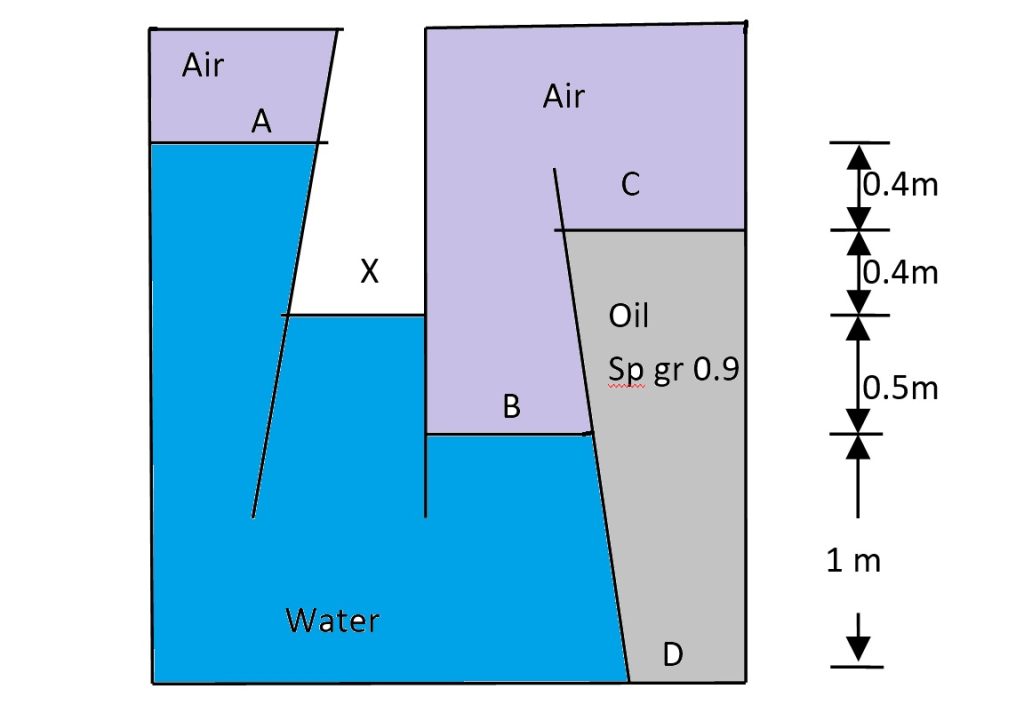Problem Statement
Given the velocity field: $$ V = (6 + 2xy + t^2) \hat{i} – (xy^2 + 10t) \hat{j} + 25 \hat{k} $$ Compute the acceleration at the point \( (3, 0, 2) \) at \( t = 1 \).
Solution
-
Local Acceleration:
$$ \frac{\partial u}{\partial t} = 2t = 2(1) = 2 $$
$$ \frac{\partial v}{\partial t} = -10 $$
$$ \frac{\partial w}{\partial t} = 0 $$ -
Convective Acceleration:
For \( a_x \):
$$ \frac{\partial u}{\partial x} = 2y = 2(0) = 0 $$
$$ \frac{\partial u}{\partial y} = 2x = 2(3) = 6 $$
$$ u \frac{\partial u}{\partial x} + v \frac{\partial u}{\partial y} + w \frac{\partial u}{\partial z} $$
$$ = 7(0) + (-10)(6) + 25(0) = -60 $$For \( a_y \):
$$ \frac{\partial v}{\partial x} = -y^2 = 0 $$
$$ \frac{\partial v}{\partial y} = -2xy = 0 $$
$$ u \frac{\partial v}{\partial x} + v \frac{\partial v}{\partial y} + w \frac{\partial v}{\partial z} $$
$$ = 7(0) + (-10)(0) + 25(0) = 0 $$ -
Total Acceleration:
$$ a_x = 2 + (-60) = -58 $$
$$ a_y = -10 + 0 = -10 $$
$$ a_z = 0 $$ -
Final Acceleration Vector:
$$ \mathbf{a} = -58 \hat{i} – 10 \hat{j} + 0 \hat{k} $$Magnitude of Acceleration:
$$ |\mathbf{a}| = \sqrt{(-58)^2 + (-10)^2} \approx 58.86 \text{ units} $$
Physical Significance & Engineering Context
Fundamental Concepts
- Acceleration Field: Describes how fluid particles change velocity over time and space.
- Local Acceleration: Occurs due to time-dependent velocity components.
- Convective Acceleration: Arises from spatial variations in velocity and the motion of fluid particles.
Practical Interpretation
- Acceleration in fluid flow affects pressure variations and turbulence.
- Understanding acceleration fields helps in CFD simulations for aerodynamics and hydraulic designs.
- Applied in studying river flows, wind dynamics, and high-speed jets.



